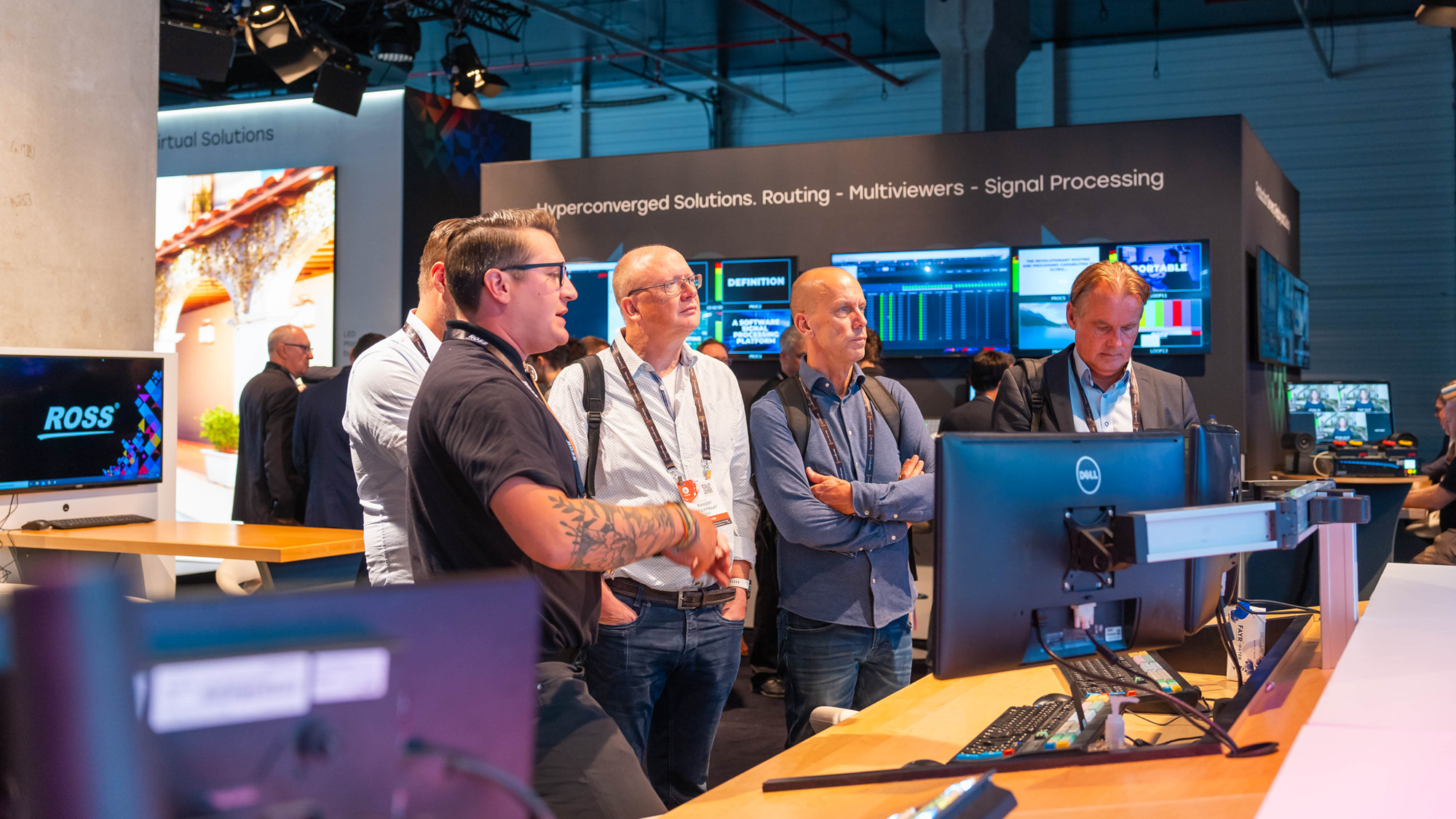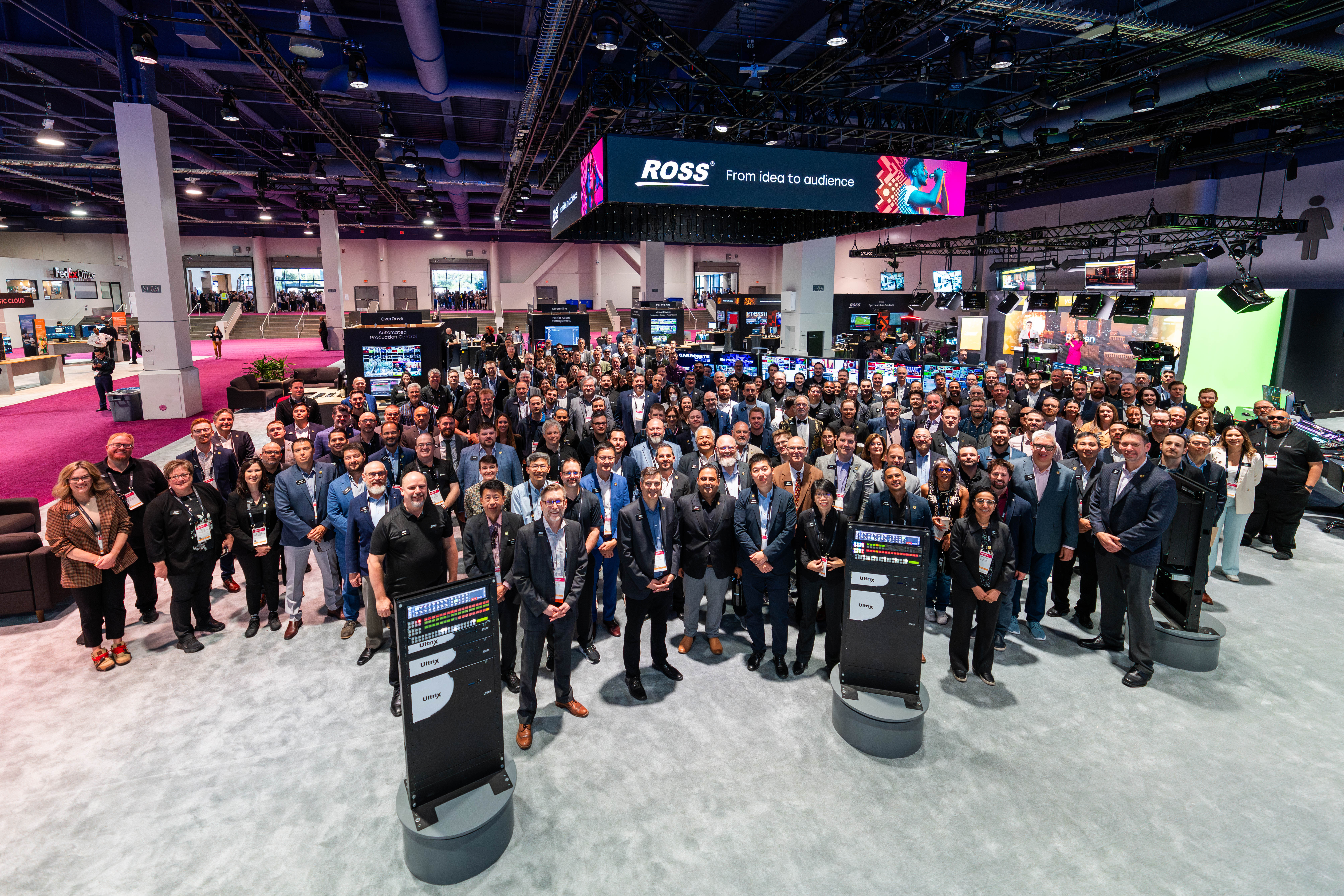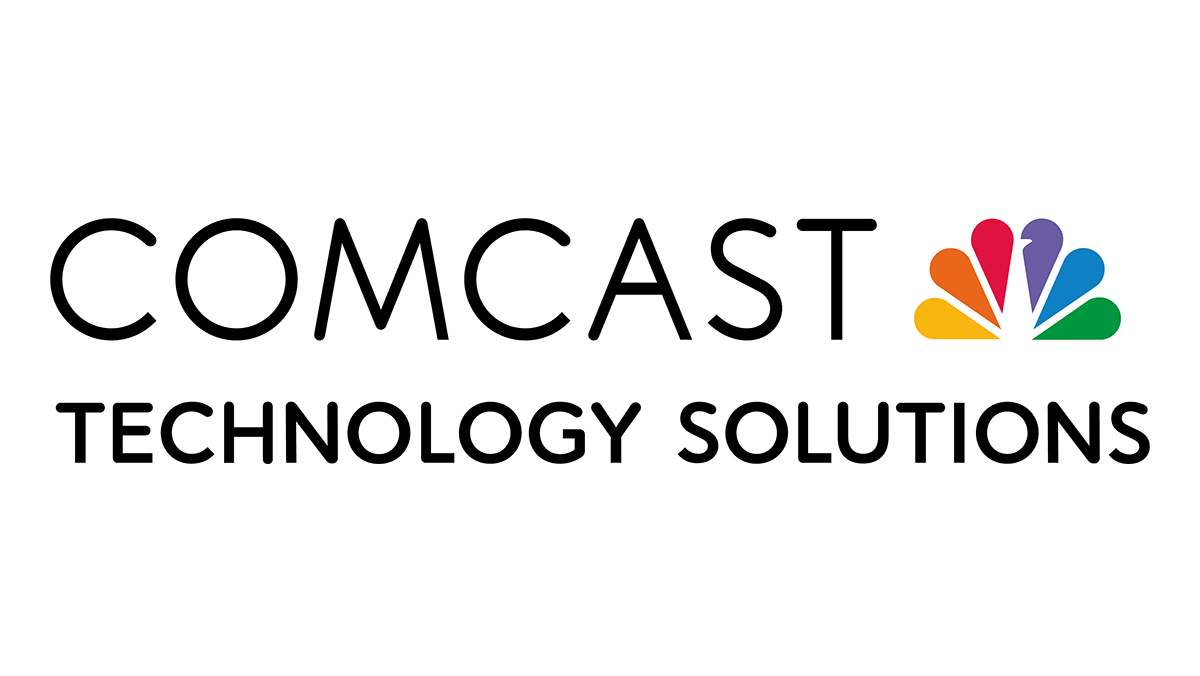The Critical Role of Customer-Driven Broadcast Innovation
A customer-driven approach to innovation streamlines and simplifies workflows while maintaining quality

Live concerts and sporting events on platforms like Netflix and Prime. Entire broadcast workflows and studios managed through the cloud. A U.S. election that’s being widely covered through social media influencers. YouTube is now the preferred source for news, followed by WhatsApp and TikTok. And the ever-squeezing vice that’s reducing traditional broadcast viewership while simultaneously increasing demands on those same platforms.
It’s safe to say that there’s no shortage of competition in the broadcast industry and deep viewership ripe for innovative content producers and broadcasters. To meet this demand and to beat the competition, broadcasters need to deliver real-time and on-demand content in an interactive manner across an ever-growing pool of platforms. Their needs are complex and specific.
In this landscape, media companies are constantly pressured to adopt cutting-edge technology and must make purchasing decisions at a rapid pace. Technology innovators, likewise, are under pressure to push out products to adapt to this rapid change. But when decisions are rushed, mistakes are easily made.
Most commonly, these mistakes will emerge as a disconnect between technology that is created and sold, and what actually aligns with the broadcaster’s day-to-day challenges, operational workflows, and long-term goals. When it doesn’t align, operational inefficiencies emerge and the overall efficacy and reliability of the broadcast infrastructure comes into question.
Taking a customer-driven approach to innovation that streamlines and simplifies workflows while maintaining quality is the way around this disconnect. This article will explore why that’s important, and how to find technology partners to help you take the necessary steps to innovate and think bigger about engaging and delighting your viewership.
The problem with broadcast tech that lacks customer focus
In an industry where technology and consumer habits are rapidly changing, live broadcast and media organizations need more than just cutting-edge solutions. They need tools designed with specific challenges and operational success in mind.
Innovation without understanding the customer’s needs can result in technology that fails to solve real-world problems, leaving broadcasters with tools that don’t drive their business forward and may even hinder the quality of their broadcasts.
This leads to four specific problems for both broadcasters and technology providers:
- The technology misses the mark. Many technology solutions—in broadcasting and many other industries—focus on novelty without addressing real-world problems. There’s a tendency to develop and buy based on the latest “shiny object” rather than what’s functional. And that’s usually driven by a lack of communication between end users and developers. When this occurs, broadcasters often encounter overly complex tools that fail to integrate seamlessly into their workflows, leading to inefficiencies, increased costs, and limited practicality instead of addressing their challenges effectively.
- There’s a loss of operational efficiency. When tools aren’t developed with end users in mind, the end user suffers the most. Broadcasters may end up with tools that don’t integrate well with existing systems, creating operational bottlenecks. These teams are left to figure out how to make ill-fitting technology work, often leading to higher training costs, downtime, or failure to leverage new solutions fully.
- There are missed opportunities for revenue growth. If end users don’t know how to properly use a product, or that product doesn’t align with their actual day-to-day needs, they simply won’t use it. When that happens, there’s a loss of both the initial investment and stunting of potential revenue growth due to a lack of adoption, underused features, and limited ability to scale existing operations. Simply put, the tool purchased to drive growth is actually preventing it.
- The broadcaster’s reputation takes a hit. When a tool fails to deliver, the broadcaster also fails to deliver to their customers, potentially resulting in sub-standard content or live experiences. This can ultimately lead to a loss of trust from viewers, and a negative hit to the broadcaster’s reputation.
Broadcast technology should be developed in lock step with customer needs. And that’s only possible when the technology provider develops close relationships with their customers, which in turn leads to customer-driven innovation.
Why broadcasting needs customer-driven innovation
Broadcast technology that doesn’t align with real-world needs isn’t useful. We’ve established that. Instead, what’s needed is close collaboration between end users—broadcasters—and individuals who create the technology they use to build and deliver content to their audiences. Customers, in other words, need to be in the driver’s seat of innovation.
When they are, technology is planned, developed, and refined to address specific pain points and operational goals, instead of being driven by the hottest trends of shareholder pressures. This ensures that the technology allows for greater operational efficiency, reliability, and opportunities for strategic growth, rather than being a barrier to it.
The most successful technology partnerships are those that prioritize customer collaboration, ensuring broadcasters are equipped to thrive both today and in the future. Tech providers can deliver practical, easy-to-use, and scalable solutions by engaging broadcasters throughout the product development process.
A technology partner that listens to these specific needs and develops tools to meet them helps the broadcaster not only deliver on the viewer’s expectations but also can construct integrations between these tools to ensure that the broadcast is seamless and free from delays.
What to look for in a broadcast technology partner
Broadcasters should look closely at each vendor’s track record for customer-driven innovation when considering new technology partners. To do so, look for vendors who show the following characteristics and values related to their product innovation and customer service initiatives.

1. They have a deep understanding of the industry
First and foremost, broadcasters should look for technology partners with a deep understanding of the broadcast industry, the challenges they face as broadcasters, and the opportunities available to solve those challenges. Like with any partner, you want someone who is deeply plugged into industry, and intimately understands the technology, viewer demands, and platform requirements for large scale broadcasting.
Ideally, these providers should have a clear perspective on where broadcast technology needs to go, and what they are going to do to help get it there. Look for providers who actively solicit feedback from their customers to better understand what end users need from their technology equipment.
2. They strive to see their customers succeed
The deep industry knowledge mentioned above doesn’t just happen overnight. It comes from years of trial and error and, more importantly, from listening to clients.
The strongest technology partnerships are built on a foundation of understanding the client’s unique operational needs and aligning product development with those needs. Broadcasters should look for technology partners that actively incorporate client feedback into their innovation processes.
This is how that looks in practice:
- They have continuous feedback loops. Best-in-class technology partners hold regular, structured feedback sessions with their clients, ensuring that any pain points or operational challenges are identified early. This allows partners to address these challenges in real time, ensuring that technology adapts in response to actual broadcaster needs rather than hypothetical industry trends.
- They focus their innovations on real-world problems. Broadcasters should expect their technology providers to prioritize practical, purpose-built solutions. Instead of focusing solely on delivering cutting-edge features, the best partners design products that solve real operational problems—whether that’s simplifying workflows, reducing manual interventions, or ensuring systems can scale as broadcast demands increase.
- They’re opinionated but flexible in their innovation. A trusted technology partner should build solutions that are not only innovative but also adaptable. As the media industry continues to evolve, broadcasters will face new challenges, so their technology must adapt as well. This includes products designed to scale with future needs and keep up with new technologies and workflows, ensuring long-term operational success.
If you’re unsure if a potential partner incorporates these points into their R&D roadmap, ask how they decide what products to build. It may be a red flag if customer input isn’t at least part of that process.
3. They anticipate future industry trends through customer-informed R&D
Another key indicator of trust is a technology provider’s ability to anticipate future challenges before they become problems. This can be gathered from their own experience and from customer feedback sessions.
Using these inputs to inform and adapt product roadmaps is another sign of a customer-driven technology partner. They actively listen to customer challenges, overlay that with their own experience, and forecast future needs—whether that’s addressing the growing demand for UHD content, integrating with new cloud-based workflows, or anticipating new distribution platforms.
Broadcasters should expect technology partners to invest in scalable solutions that will help to modernize their current operations. Scalable technology is designed with the flexibility to integrate new technologies and workflows as industry trends shift. This future-proof approach prevents broadcasters from being locked into outdated systems, ensuring they can adapt as media landscapes evolve.
To achieve that level of forethought, innovators need to intimately understand where customers are today, and what they will likely need in the future. That’s the sign of a customer-driven technology partner.
4. They prioritize operational efficiency through design and support
Trust with a technology partner is also built on how effectively they support the broadcaster’s day-to-day operations—either directly through support services or indirectly through user-friendly and well-integrated tools.
The most reliable partners design technology that is intuitive and easy to implement within existing workflows. They couple this with highly skilled and customized training that allows broadcasters to quickly integrate new technology into their operations. Look for solutions that simplify complex tasks and make your team more efficient.
Support is also an important factor. Broadcasters should seek partners who provide on-call, 24/7 support, offering fast, effective solutions when issues arise. This type of support minimizes downtime, reduces operational costs, and ensures broadcasters can maintain high-quality production standards, even under pressure.
Bonus points for any technology partner who also uses these support conversations to help inform future product updates!
Customer-driven innovation leads to customer-centric products Broadcasting is growing more complex every year. The last thing broadcasters need is added complexity from products that don’t align with their day-to-day needs. By focusing on scalability, innovation, and adaptability, Ross ensures its customers can grow confidently, innovate boldly, and deliver exceptional content across platforms. Ross Video provides broadcasters with the tools and expertise to thrive in an industry that rewards agility and creativity.
This puts their customers in the driver’s seat, giving them the power to shape the future of the tools they use to deliver great content and experiences to their viewers.
Technology upgrade guide
Outdated technology — it slows production, diminishes content quality, and adds creeping maintenance costs that quietly drain productivity and threaten your competitive edge. But how do you upgrade technology without disrupting workflows? Or worse, causing downtime?
Download our Technology Upgrade Guide for a practical approach to modernizing live production technology so you can devise a strategy that ensures smooth operations during a transition and well into the future.
Get the TV Tech Newsletter
The professional video industry's #1 source for news, trends and product and tech information. Sign up below.

